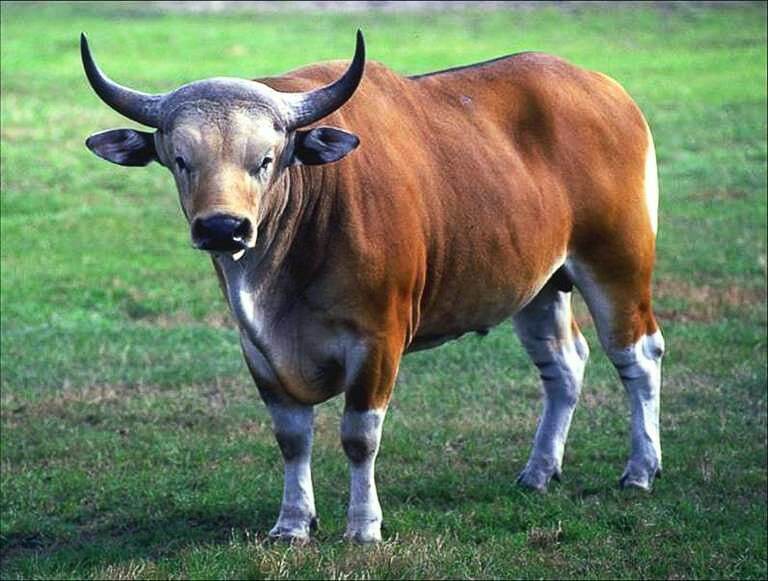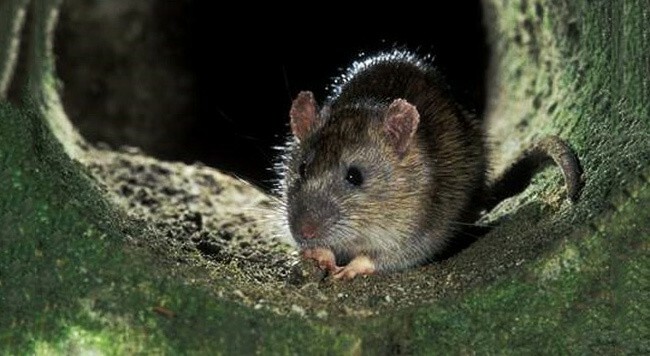Large assortment of building materials makes it possible to have a truly unique room design. Decorative plaster - it's one of the most popular types of decor. Ease of maintenance, aesthetics, environmental friendliness have made it a viable alternative to wallpaper, ceramics, dyeing or other types of wall decorations. Use the trim not only as a self-sufficient material to decorate the walls, but also as a basis for the invoice staining.
Content
-
Types putty mixtures
- acrylic
- mineral
- silicate
- textured
- structural
- Venice
- Advantages decorative mixture
- The choice of filler
- Tools and rules applying
-
Methods of application and preparations
- fur coat
- Creative
- bark beetle
- fish scales
- Separate manufacturing of the decorative mixture
Types putty mixtures
Decorate the surface can be different. For example, with a conventional plaster can be aligned perfectly to the wall of a smooth state. Adding special formulations allows for bump effect, to obtain a glossy surface or simulate various natural Material: semi-precious stone, fabric, skin, exotic animals, concrete surface, sculpting - depending on the chosen style clearance.






Depending on the used binder such distinguished varieties of plasters.
acrylic
The binder is an acrylic resin - a polymeric high molecular compound. Due to the polymeric component applied layer obtained very elastic. The presence of mineral and organic pigment provides a different tint variation. Acrylic filler sold as ready-to eating mixtures. acrylic minus that decorated surface does not "breathe" water vapor permeability of the material is extremely low. In addition, the surface is sensitive to sunlight; over time it begins to crack. Special pigment pastes are helping to paint the surface in different colors.

mineral
The mineral mixture of cement - a binder. Such mixtures are sold in dry form, they are diluted with water. Mineral compositions are best suited for outdoor use and design of wet rooms (eg bathrooms). This environmentally friendly option that is resistant to UV radiation. Over time, coverage only becomes stronger. But he has a flaw plaster resistant to mechanical stress. For purification desirable to apply the device for feeding the detergent composition under pressure. Standard gamma tint - light.






silicate
As the coupling element is used here waterglass (mixture of quartz sand, potassium hydroxide, and alkali potassium carbonate). The surface obtained is very strong, unattractive for mold and mildew, as well as water-repellent effect. The finished mixture is simultaneously binders, impregnants and adhesive properties. Fire resistance and water vapor permeability are also at altitude. Such coating is sold as a finished composition of different colors. This is the most reliable version of the above, in operation for half a century or more. Silicate compounds used in the design of facades of houses in a humid climate.






On the type of filler distinguish 3 types of fillers:
- Venice.
- Impressive.
- Structure.
The last two types of fillers to form a surface with a relief. As for the Venetian plaster, they are perfectly aligned. All of these kinds of decorative materials for the walls are made of robust, durable and environmentally friendly components.

textured
This filler differs coarse structure. The filler used flax fibers, mica, wood, mineral (granite, marble) chips, pebbles. Scope - decoration plastered, wood, concrete surfaces and brick. Decor is equally well suited for indoor and outdoor use. Large particles can hide surface irregularities. For the application there is no need to pre-prepare the walls. Preparatory works are as drying, removing loose coating, and applying an adhesive composition for a better adhesion of the coating to the wall.
See also:Artificial stone in the interior - 50 photo ideas






Invoices can be different: imitation leather, textiles, wood or natural stone. This is the most diverse type of decorative filler. Important it advantage - low cost. Plasters sold in already prepared form or as a dry mixture. Undesirable putty outdoor applications or in rain when the air temperature less than 7 degrees. One of the main advantages - a simple application. Even with self-design of the walls probably a lot of options.

Distinguish subtypes such textured surfaces:
- Sheep - a fine-grained texture of stone putty solution grains.
- Coat - a mixture based on cement. Rough surface is obtained, with the effect of hairiness.
- Woodworm. The surface resembles wood, pest damaged the same name, and has a distinctive grooved texture. It looks great with rattan furniture or wood.
structural
This thin layer of material based on acrylic or silicate composition. Structurant are quartz or marble grit. It is used for interior and exterior work. Depending on the structure-forming components, the surface may be perfectly flat, or medium-grained. Structural mixtures are ideal for decorating drywall partitions in the interior, as well as for most of the mineral surfaces. This material can not be used for exterior and wet areas. Methods of applying various decoration: using a spatula, roll or sprayer.






Venice
This interior coating is laminated with the addition of slaked lime and fine marble chips. This is one of the oldest types of finishes, which are widely used in ancient Rome. Waste from the processing of marble let into the case. The result was a mirror-smooth, exceptionally beautiful surface, resembling in appearance or natural onyx marble. Material cost is high, the application is not an easy technique, but the result is worth it.

Suitable styles - classic, antique or baroque. By means callers can get different shades, including pearlescent shade or imitation precious metals. It looks nice, "Venetian" and as a basis for the mural paintings and panels (for example, a popular figure "butterfly", "shell" or the use of plant motifs).






The smooth surface is equally well suited for large and small rooms, with a limited number of square meters. The room will seem more spacious. And in a large apartment have a truly palatial interior.
Advantages decorative mixture
Like all building materials, decorative fillers have their strengths and weaknesses. The benefits include:
- Practicality, durability. If properly perform the application materials to the wall and abide by the rules of operation, the coating will last you a very long time. In addition, most modern materials resistant to mechanical stress.
- Elimination of defects of the walls. The use of textured material helps hide irregularities of the walls. Best Mode for that matter - a mixture of cellulosic filler.
- Versatility - possibility to use for different types of surfaces.
- Resistance to external factors.
- Environmental Safety. Cladding for walls does not contain toxic substances has no unpleasant odor, it does not absorb the harmful components contained in the air. Most modern coatings "breathes" through the porous structure. Putty is also a good sound insulation.
- Many design options. You can decorate the walls according to your taste.
See also:Drawings on the walls in the interior 75 photo






From the noted disadvantages can be high cost, difficulty of application and removal.
The choice of filler
When choosing a putty into account such criteria:
- Characteristics and functions of the room.
- Specificity surface.
- "The price of the issue". This is true, if the financial opportunities are limited.

An important point - a kind of filler. In essence, it determines that the owner will see on the walls of the repair is completed. The larger the grain filling, the strikingly turns drawing. One or another decorative effect depends on the application method. Not every kind of material is suitable for a particular technology.





Tools and rules applying
Mixture for plastering surfaces are sold in different forms. This can be a dry mixture. An aqueous solution of a mixture need to develop, so it does not lose its properties. It is much easier to buy ready-made for the application of putty, which for a long time retains the properties. For self-application is particularly useful type of textured decorative plaster. Experts say: to spoil such a coating, it is necessary to try very much. In addition, there is no need for too careful preparation of the walls. Textured mixture at Shpatlevanie itself perfectly smooths out imperfections.

Before applying the covering wall is purified from the old decor sealed slit. "Woodworm" this training is sufficient for plastering. And, for example, Venetian involves coating a much more thorough preparation, for example, smoothing of walls to an ideal condition.
The required minimum of tools for spackling following:
- A set of spatulas.
- Metal trowel.
- Grater made of plastic or wood.
- Roller for plaster.
- The water tank and the finished solution.






Methods of application and preparations
A method for preparing the mixture has on the packaging. To get a usable solution, compliance with the instructions required. It is equally important to correctly calculate the dose at once. Otherwise the mixture will harden already at capacity. Prepared by the need to work out a solution as soon as possible, the application of decorative fillers can not tolerate long-term outages. For a unique surface can be used or undulating circular application, "rain", horizontal reliefs. With the use of roller coating textured topography simplified significantly. Particular attention should be given to the joint portion, to avoid sagging. After about 15-20 minutes. surface treated trowel. For a complete hardening plaster required about a day. Processing fine sandpaper will help remove all the excess decoration.






fur coat
This cover looks great on the outside and inside the house. To work he needed a solution and polyethylene pieces. For a more textured pattern using dense polyethylene. With a thin polyethylene is obtained in a smoother coating.

Apply the mixture on the wall. Too careful preparation is not necessary, because the decor will hide minor flaws. Now you can do decoration. Crumple polyethylene and apply it to the wall to get the desired texture. For smoother texture to the wall applied soft material, which coincides with the coated area.
See also:Types and methods of painting the walls in the interior 75 photo
Creative
This is an unusual and non-standard invoice, which is almost impossible to repeat. Obsheyte paint roller imitation leather so that it covered the chaotic folds. After the surface treatment is obtained an unusual structure.

bark beetle
To start, align the biggest swings, then clean the surface. Next, apply a primer, preferably quartz sand. The render is applied in small layers, using a trowel. Directions trowel may be different depending on whether it is the original pattern you want. It looks best diagonal "jagged" pattern. Ornament obtained by the air under the tool.

fish scales
This drawing is created spatula. Moreover, the wider it is, the picture will turn out larger. Coat a small area, with palm. The thickness of the coating of about 4 mm. Since the angle of attach spatula, pressing it in the uncured mixture. To figure looked more beautiful, make sure that in all areas of pressing force was the same.

Separate manufacturing of the decorative mixture
It so happens that the available options in the store for some reason do not fit. You can make a mixture of its own, from scrap materials. This approach allows you to save. However, we must remember that the quality and durability of the mixture prepared their own inferior product prefabrication. But given the relative cheapness of materials, in the 10-15 years period it is appropriate. For the manufacture of decorative coating with your hands approach is usually plaster or gypsum cement.

Here is a simple way of cooking:
- Take the starting and finishing putty in equal proportions. Start the putty can be replaced by stucco.
- Pour the mixture into a bucket of lukewarm water.
- Add the finishing material slightly diluted glue for wallpaper. The mixture hardens more slowly, you can use it longer. In addition, it makes for an unattractive wall of the fungus and insects.
- Stir the mixture with a mixer or building, using a drill with a nozzle.
Try to cook for 1 time is the amount of solution that you will be able to work out for 15 minutes. Even more effectively work together, one directly employed plastering the wall, the other - the application of the pattern.






If you use such a coating in the kitchen or in the bathroom, an additional coating of water repellent varnish. On the Internet there are master classes.
For facade works suitable coating based cement slurry with a small amount of primer. To the resulting decor remained attractive as long as possible, it is necessary not just to plaster the wall and covered with facade paint. Decorating can be a solid or in the form of panels.
The particular choice of coating for the walls depends on the taste of the owner of the premises and the requirements for the results obtained. Considerable importance is the budget, because the cost of various types of decorative fillers differs by an order. It is necessary to look at both the complexity of the application. With Venetian plaster, for example, can handle only an experienced plasterer, as usual textural and structural mixture applied is fairly simple. You can make the mixture with your hands or use a factory production, for example, travertine or Bayramiks. Neighbors and visitors will envy you!



